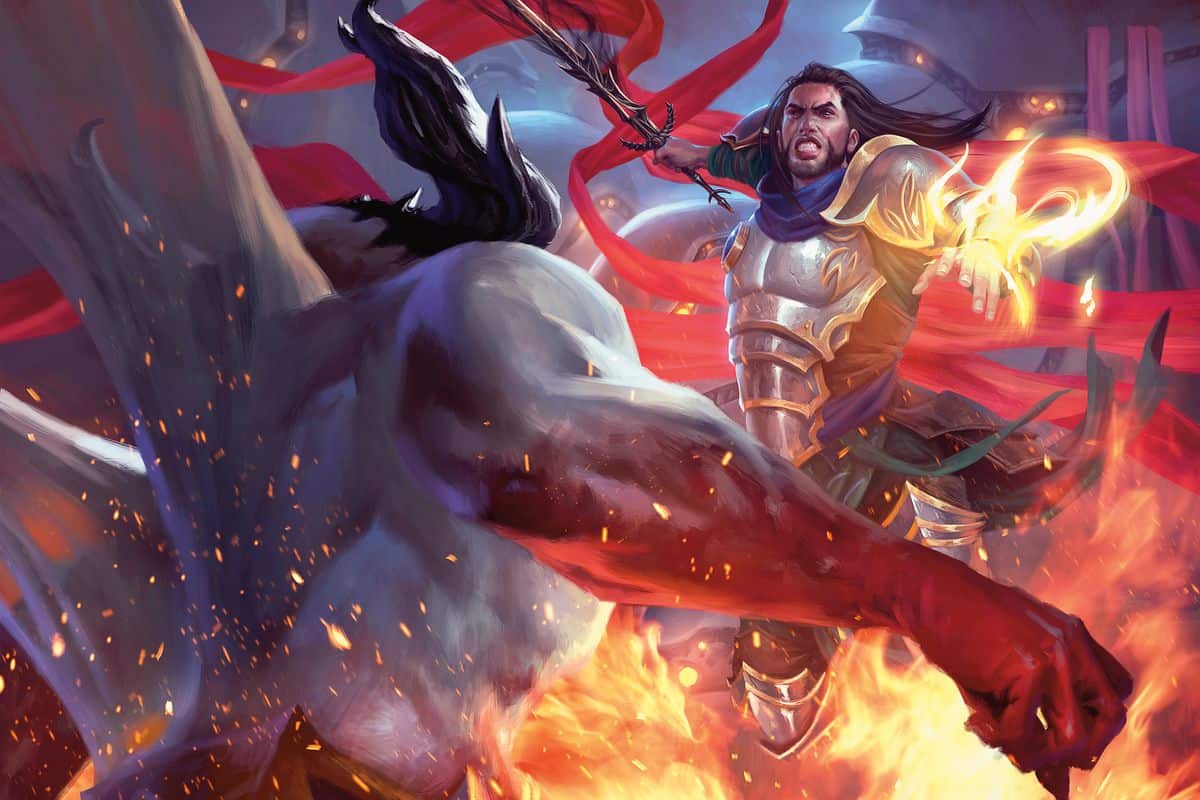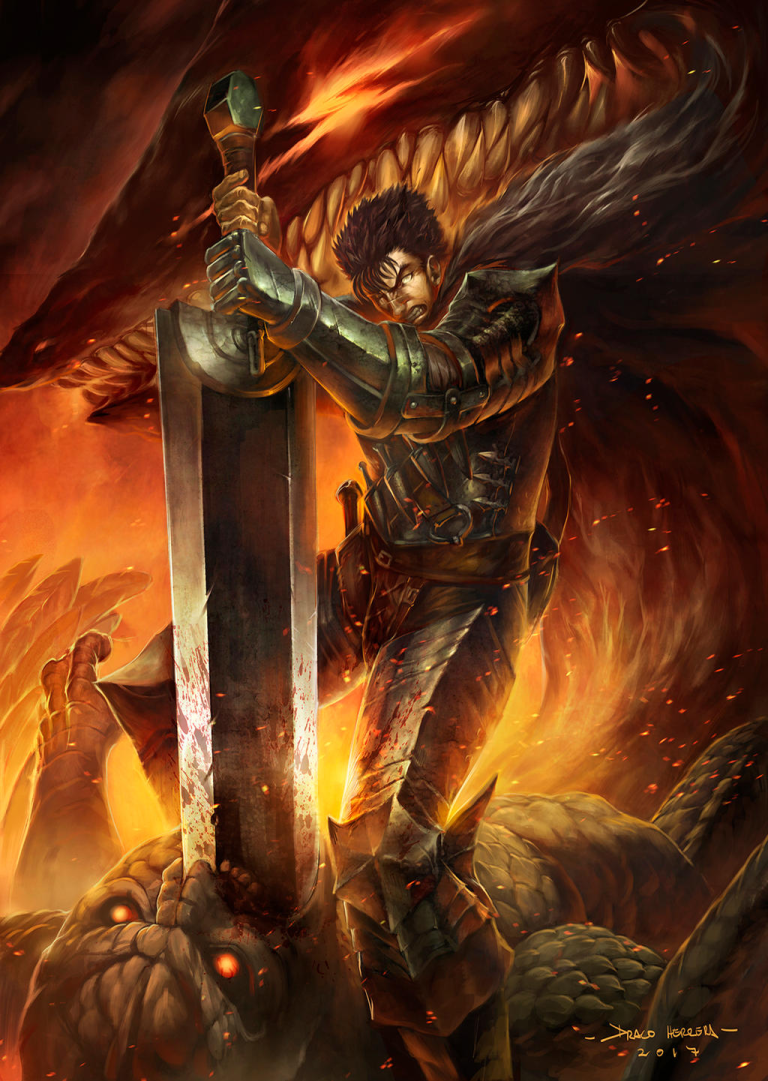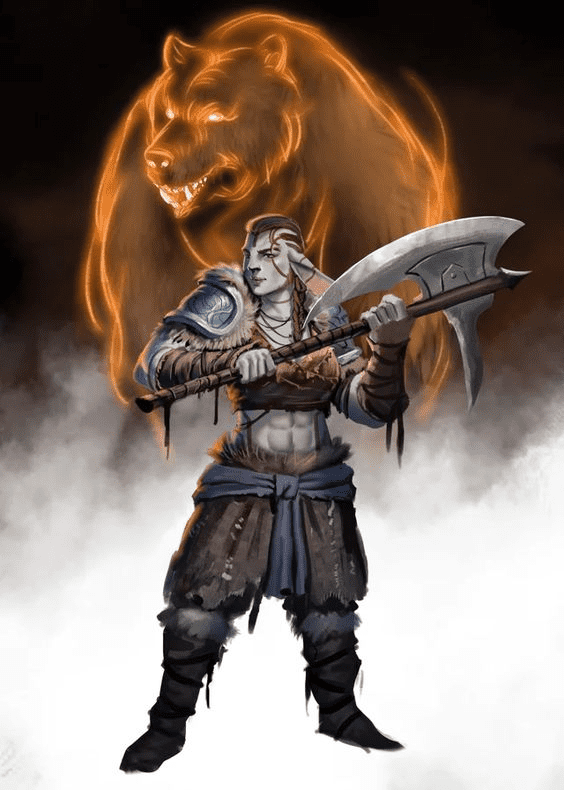D&D 5e: Oath of the Watchers Paladin Guide

D&D 5e: Oath of the Watchers Paladin Guide
Role in the Party
You’re a paladin, and you’re here to kill demons. And devils, and yugoloths, and other fiends, and elementals, and fey, and aberrations, and maybe celestials if you have a reason to have beef with them.
The Oath of the Watchers Paladin is a subclass centered around defending the material plane from extraplanar threats. Your tenets are vigilance, loyalty, and discipline, and you want to get jacked, keep your mind sharp, and kill demons.
You fill the normal paladin roles of melee damage, protecting allies, delivering extreme burst damage, using light spellcasting, and all of your Watchers Paladin subclass features to support these things. However, some of your features are only useful against certain creature types or in certain fights, so keep that in mind.
Epic
Good
Meh
Bad
The Oath of the Watchers Paladin subclass is found in Tasha’s Cauldron of Everything. Click here to pick up your own copy of Tasha’s Cauldron of Everything!
Oath of the Watchers Features
Oath Spells
You gain oath spells at the paladin levels listed.
3rd: Alarm is vastly better as a ritual than as a normal spell and the same with Detect Magic. Let the wizard cast these.
5th: Moonbeam isn’t a good idea unless you can get 3-4 creatures in the aura, and See Invisibility is circumstantial. According to Jeremy Crawford, See Invisibility actually doesn’t let you ignore disadvantage to hit invisible creatures for complicated reasons involving the wording, but every DM I’ve played with lets the See Invisibility spell fully see the creature and negate the disadvantage you have to hit them.
9th: Counterspell is stellar, but you get it later than a full caster, and it costs another spell or a smite to use it once. Nondetection is extremely circumstantial, and you probably can’t cast it on the whole party, so the enemy lich can still probably scry on them. It also costs 25 gold to cast.
13th: Aura of Purity is a decent spell that gives poison resistance and advantage against a lot of conditions, but it’s already on the paladin spell list. Getting it for free is nice though. Banishment is less good than it would be at 7th level, especially on a paladin since you need to give up a bunch of attacks to use it and your charisma may not be maxed out.
17th: Anything worth using Hold Monster on at 17th level probably has legendary resistance anyway. Scrying is pretty good, and it lets you see what those wacky mind flayers are doing.
Channel Divinity
When you take this oath at 3rd level, you gain the following two Channel Divinity options. See the Sacred Oath class feature for how Channel Divinity works.
Watcher’s Will: You can use your Channel Divinity to invest your presence with the warding power of your faith. As an action, you can choose a number of creatures you can see within 30 feet of you, up to a number equal to your Charisma modifier (minimum of one creature). For 1 minute, you and the chosen creatures have advantage on Intelligence, Wisdom, and Charisma saving throws.
It costs an action, and it’s situational, but your entire party will be vastly more powerful against mental saving throw effects for an entire fight. Mental saves tend to come with nasty effects like paralysis, fear, possession, mind control, being banished to another plane, being teleported against your will, being turned into a fish, or if you’re lucky, just a lot of psychic damage.
Abjure the Extraplanar: You can use your Channel Divinity to castigate unworldly beings. As an action, you present your holy symbol and each aberration, celestial, elemental, fey, or fiend within 30 feet of you that can hear you must make a Wisdom saving throw. On a failed save, the creature is turned for 1 minute or until it takes damage.
A turned creature must spend its turns trying to move as far away from you as it can, and it can’t willingly end its move in a space within 30 feet of you. For its action, it can use only the Dash action or try to escape from an effect that prevents it from moving. If there’s nowhere to move, the creature can take the Dodge action.
This also costs an action, and it’s also situational. But when you’re fighting a room full of demons, you can easily make half of them run away in terror while you decapitate the other half. Then you chase after the terrified half and decapitate them too. Note how this isn’t actually a frightening or charming effect, it just makes them flee: though terror is probably what they’re feeling.
Aura of the Sentinel
At 7th level, you emit an aura of alertness while you aren’t incapacitated. When you and any creatures of your choice within 10 feet of you roll initiative, you all gain a bonus to initiative equal to your proficiency bonus.
At 18th level, the range of this aura increases to 30 feet.
You get an initiative bonus! You get an initiative bonus! Everybody gets an initiative bonus! And unlike other auras, you don’t even have to worry about keeping allies in the radius. They’re probably all in it at the start of combat, and the start of combat is the only time you need the aura.
Vigilant Rebuke
At 15th level, you’ve learned how to chastise anyone who dares wield beguilements against you and your wards. Whenever you or a creature you can see within 30 feet of you succeeds on an Intelligence, a Wisdom, or a Charisma saving throw, you can use your reaction to deal 2d8 + your Charisma modifier force damage to the creature that forced the saving throw.
Fairly meh: You can use your reaction to deal mediocre damage when someone succeeds on a mental saving throw. It’s not much damage, and it’s circumstantial. At least it’s free.
Mortal Bulwark
At 20th level, you manifest a spark of divine power in defense of the mortal realms. As a bonus action, you gain the following benefits for 1 minute:
You gain truesight with a range of 120 feet.
You have advantage on attack rolls against aberrations, celestials, elementals, fey, and fiends.
When you hit a creature with an attack roll and deal damage to it, you can also force it to make a Charisma saving throw against your spell save DC. On a failed save, the creature is magically banished to its native plane of existence if it’s currently not there. On a successful save, the creature can’t be banished by this feature for 24 hours.
Once you use this bonus action, you can’t use it again until you finish a long rest, unless you expend a 5th-level spell slot to use it again.
Bonus action activation instead of a standard action is nice, and you have free advantage against all the demon lords you’re probably fighting at this level. You can also banish weaker demons who don’t have legendary resistance, but this doesn’t actually kill the demon, so you might want to just slaughter them on the spot if you want to go, full demon exterminator.

Strengths
You will obliterate aberrations, celestials, elementals, fey, and fiends when you fight them. You will terrify them, your allies will be resistant to their mental magic, your whole party will have a bonus to initiative, and at high levels, you can activate permanent advantage mode and maybe banish them if you’re feeling merciful. You do a good job of protecting allies.
Weaknesses
Aside from the initiative bonus, you don’t have any features that work in all combats. If you are fighting nothing but dinosaurs, monstrosities, humanoid warriors, and so on, you won’t have a chance to use most of the arsenal from your subclass. Your domain spells aren’t all that great, with the exception of counterspell, which is situational.
Best Race Options
Aasimar is an ideal choice if you want to kill fiends; it makes sense that a creature related to celestials would want to protect the world from fiends. All three subraces are equally good since their 1/long rest ability gives them bonus damage, but Radiant Soul (known as the Protector pre-monsters of the multiverse) grants a flying speed, letting you hit flying creatures with melee attacks.
Want to kill mind flayers? The Githyanki and Githzerai both hate mind flayers even more than they hate each other. Perfect for the mind flayer killing campaign. The Githzerai are slightly better since they get the Shield spell, but the Astral Knowledge feature of the MotM Githyanki has a lot of utility potential.
Is adding your proficiency bonus to initiative once not good enough for you? Want even more initiative? Be a dexterity-based paladin and go with the Harengon race for utterly stupid bonuses to initiative; their bonuses combine, unlike some different things that let you add your proficiency bonus. Remember, if you want to multiclass into or out of paladin, you still need a strength score of 13+.
Choosing the Right Skills
Your dungeon master should turn you into an Oathbreaker if you don’t select Perception as one of your skills. Your subclass has “watcher” in the name, and vigilance is one of your traits, and it’s a powerful skill.
Stealth is useful for sneaking up on demons. Arcana is useful for recalling information on demons. Religion is useful for knowing if that cult is worshipping a demon lord. Athletics is useful for arm wrestling the demon, and for jumping over obstacles to reach demons, Persuasion is useful for convincing the king that you need more money to buy demon-killing equipment, and Performance is useful for doing party tricks at the birthday parties of demons. Maybe that last one is a bad idea.
Intimidation may seem like a good idea at first, since you may want to intimidate demons, but you should just kill them instead. But if you’re playing a Watchers Paladin in a campaign with a lot of humanoid NPCs that you would rather not kill, it may be a useful skill if it fits your character.
Fitting Feats
If you want to lean into the vigilance angle, Alert will help you win initiative. It may be overkill if you went Harengon and boosted dexterity though.
Polearm Master is a powerful feat on any melee character since it gives you a bonus action attack and a decently reliable reaction attack in a lot of fights, and later on, you can combine it with Sentinel, Great Weapon Master, or both. Polearm Master is best taken at low levels, and it also boosts your crit chance per combat since you’re making more attacks and can fish for crit smites more often.
Dragons are creatures that are closely tied to the material plane, and your character is trying to protect the material plane, so why not use the power of dragons to fight extraplanar threats? Gift of the Chromatic Dragon will give you a reaction-based defense against elemental damage you can use several times a day, and a bonus action that adds 1d4 elemental damage of your choice to your weapon for a minute. These are moderate but fitting bonuses to your character.
Optimal Backgrounds
If you want a reason for your character to crusade against demons or another campaign-appropriate threat, the Haunted One background is exceptionally useful. Your character has gone through a lot and wants to protect others or get revenge: perfect. Heart of Darkness is useful if you want to rally the people to fight alongside you, but this could result in these low HP commoners dying.
Folk Hero is a solid background if you want to be a noble paladin who saved their town from a [extraplanar creature type here] threat and found their calling defending others.
There are two reasons to pick the Lorehold Student background: firstly, as a way to justify how your paladin got their arcana proficiency and learned a lot about demons and aberrations and other threats, and secondly, so you can pick the Shield spell because every paladin loves adding +5 to their already high AC.
Multiclassing Options
Remember, any multiclassing whatsoever will deny you access to your level 20 capstone. If your campaign is going to level 20, it may still be worth it to multiclass, but keep that cost in mind.
Hexblade has often been jokingly referred to as the paladin’s 7th/8th level feature: however, it is an exceptionally good dip for 1-3 levels since it boosts your crit chance, lets you attack with charisma, gives you the Shield spell, lets you do extra damage to big boss enemies, and so on. Undead is also a fine option, and the Fiend pact is going to make your DM raise their eyebrows and start pointing to the tenets written on your character sheet.
One level of Fighter gives you a fighting style, two gives you Action Surge, and three gives you a subclass: the excellent Rune Knight features will be exceptionally useful, as will the Echo Knight’s level 3 feature.
Gloom Stalker gives you advantage on initiative rolls, guaranteeing that you’ll almost always win initiative when combined with your existing bonuses. It can be hard to fit 13 dexterity and wisdom on a paladin though.
Would I recommend playing an Oath of the Watchers Paladin?
I would recommend a Watchers Paladin in any game where aberrations, celestials, elementals, fey, and/or fiends are major enemies. Try and ask your DM if these creatures will come up ahead of time. If they will come up, this is a great subclass. If not, you may want to consider another paladin, but you’ll still do fine if you pick Watchers.
There is a multitude of great builds and possible backstories and multiclass decisions for a Watchers paladin, smiting is extremely fun, and the paladin spells are pretty good. You will likely have fun and be effective if you play a Watchers paladin.








